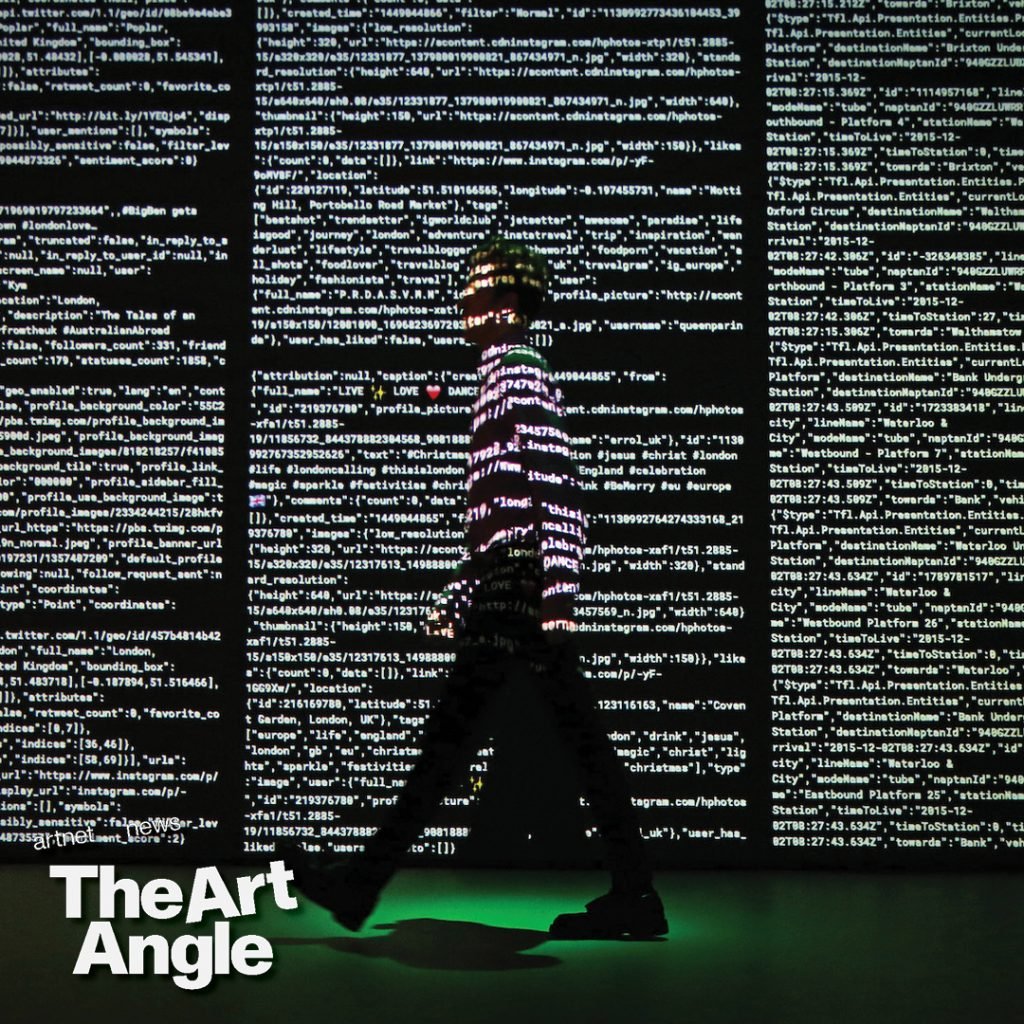The Art Angle
The Art Angle Podcast: What Is ‘Quantitative Aesthetics,’ and How Is It Changing Art?
This week, national art critic Ben Davis joins Andrew Goldstein to discuss a fascinating new trend within the art world.

This week, national art critic Ben Davis joins Andrew Goldstein to discuss a fascinating new trend within the art world.

Artnet News

Welcome to the Art Angle, a podcast from Artnet News that delves into the places where the art world meets the real world, bringing each week’s biggest story down to earth. Join us every week for an in-depth look at what matters most in museums, the art market, and much more, with input from our own writers and editors, as well as artists, curators, and other top experts in the field.
One of the most exciting things about being an art journalist is that art as a subject is ridiculously protean: what it looks like is always changing, how we engage with it is always changing, and the role it plays in society is always changing too.
What that means is that you constantly need to shift your perspective in order to see it properly.
Searching for the correct lens on art, if you’re really good and really lucky, sometimes you even get to name that lens, like Pop Art, for instance. Artnet News’s national art critic Ben Davis has written an essay that illuminates a recent shift in art that has been making big waves among the cognoscenti. It’s a new tendency that he calls quantitative aesthetics, and this week he joins Andrew Goldstein on the Art Angle podcast to discuss it.
Listen to more episodes:
The Art Angle Podcast: An Oral History of Ryan McGinley’s ‘The Kids Are Alright,’ 20 Years Later
The Art Angle Podcast: How Roy Lichtenstein Became a Super-Villain to Comic Book Artists
The Art Angle Podcast: How Does Data Give You the Edge in the Art Market?
The Art Angle Podcast: How the Heist Movie ‘Inside’ Turns Art Into a Thief’s Salvation
The Art Angle Podcast: The Triumphant, Tragic Life of Nazi-Era Artist Charlotte Salomon
The Art Angle Podcast: Hito Steyerl on Why the Metaverse Has Already Failed
The Art Angle Presents: How Three Artists Envision What a Goddess Means Today